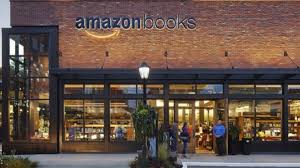16 August 2016 – Amazon has plans to open more physical bookstores, further expanding its brick-and-mortar store footprint. According to a story in the Financial Times, Amazon spokeswoman Deborah Bass said yesterday that the retail giant is opening locations in Chicago and Portland, with the Chicago store due to open next year. That brings the total number of stores nationwide to five, including the already-opened location in Seattle, and planned shops in San Diego and New York City.
Amazon opened its Seattle location last November, and has slowly revealed plans for more stores since. While the company has up until recently done much to undermine physical retail stores, opening its own allows it to sell Amazon books and Kindles while marketing its other lucrative services. “In these early days, it’s all about learning, rather than trying to earn a lot of revenue,” said CEO Jeff Bezos at a shareholders meeting in May.
Of course, having a physical presence in several US cities only intensifies Amazon’s ubiquity. Services like Amazon Fresh and Prime Now are already spreading globally, providing groceries and one-hour delivery to customers, and it just launched a hub for car buyers in Amazon Vehicles. Having stores to replace the Walmarts of the world certainly doesn’t hurt.
This ability to experiment with brick-and-mortar locations is unique. Most physical retailers are struggling to keep up with digital newcomers like Amazon and don’t have the financial leeway to test outside-the-box business models. Amazon, on the other hand, can more than afford to test whether it can disrupt the physical retail experience. In addition to cosmetic changes like displaying books cover out, the stores will operate in conjunction with online user data. They will also feature an electronic section meant to showcase products like the Kindle and Echo. This is the “nucleus” of the Seattle location.
Not only do physical locations give consumers a chance to understand the company’s hardware, experts say that in-store shopping is still the best way to spur the discovery of new books. The stores could also lay the groundwork for Amazon to open other brick-and-mortar stores focusing on other products, such as food. Though AmazonFresh allows users to have groceries delivered to their door, it’s probably a safe bet that in-store shopping is also the best way to spur discovery of new produce as well.
All of this is great news for Amazon and its investors, but the company’s expansion could be concerning for anyone uncomfortable with the idea of a single brand controlling such a large portion of retail commerce. Though Amazon has made our lives more convenient than they were when we had to wonder whether this or that brick-and-mortar retailer carried the products we wanted, it’s also a little unsettling when a company is so hell-bent on dominating everything from grocery shopping (AmazonFresh), to entertainment (Amazon Originals), to the media (Bezos bought The Washington Post in 2013), to God knows what other areas of our day-to-day lives it plans on sticking a flag in. Now it appears the all-lowercase logo is going to be all the more ubiquitous, and that the physical world will no longer be a refuge from the company’s influence. Experts have speculated Amazon could be planning to eventually open hundreds or even thousands of retail locations.
